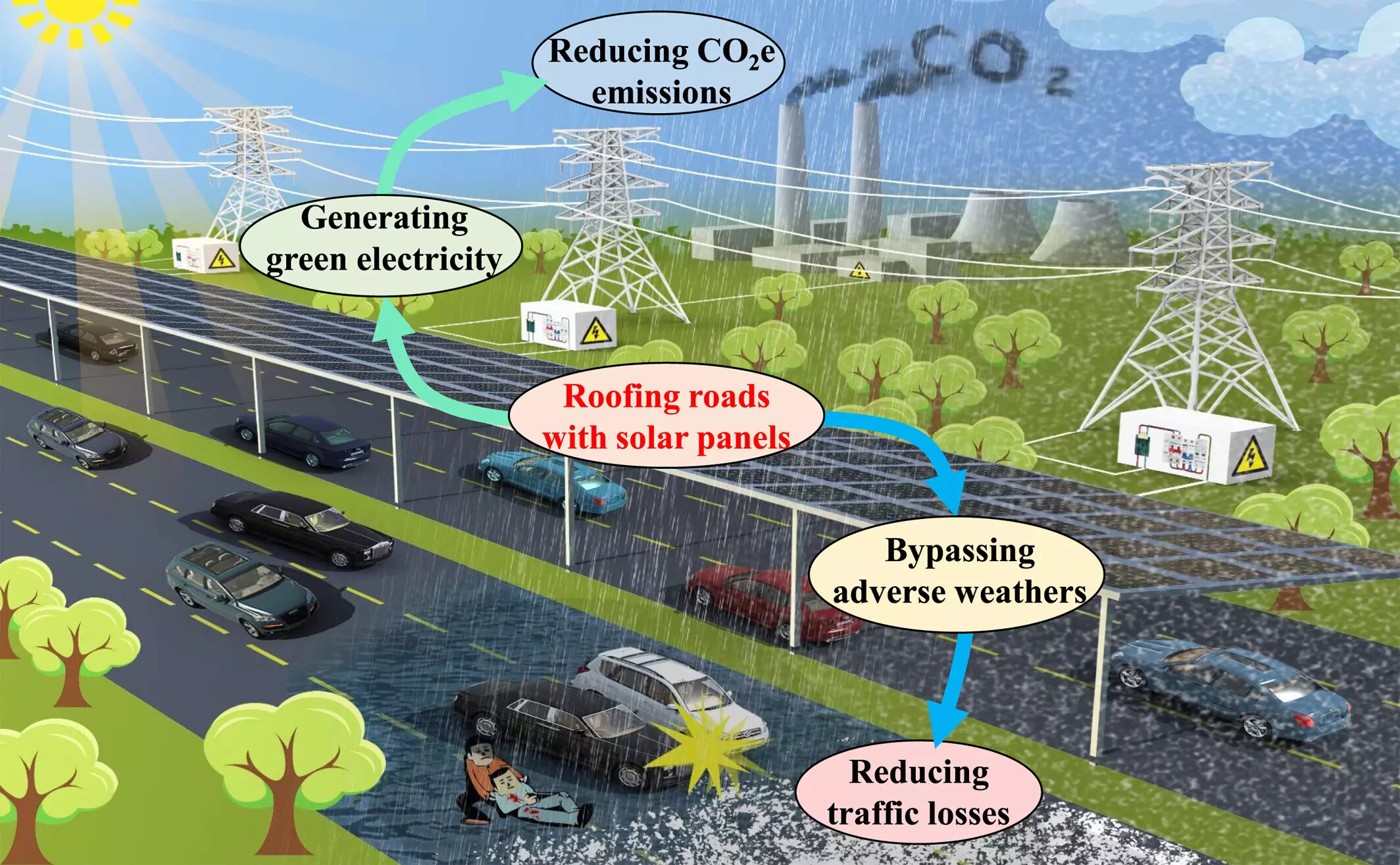As the world grapples with the existential threat posed by climate change, innovative approaches to reduce carbon emissions are increasingly essential. A recent study suggests that covering highways with solar panel roofs could be a groundbreaking step in greening our transportation infrastructure. This ambitious concept potentially transforms vast stretches of asphalt into productive energy-generating surfaces, offering a dual benefit of reduced carbon emissions and improved roadway safety. The magnitude of this idea, if adopted globally, could result in an estimated 28% reduction in carbon dioxide emissions.
Ling Yao, a remote sensing expert at the Chinese Academy of Sciences and the lead author of the study, provides compelling insights into how this project could work on a global scale. Picture solar panels elevated above bustling highways, capturing sunlight during peak hours, generating significant amounts of electricity, and, at the same time, offering protection for vehicles against adverse weather conditions. The potential of solar highways isn’t hypothetical. This study has calculated that implementing such solar roofs could produce approximately 17.58 petawatt hours of electricity annually—more than 60% of the world’s total energy consumption in 2023.
Despite existing pilot projects around the world, the scope of these endeavors falls woefully short of what could be achieved if the concept were fully realized. Yao notes that the vision for solar highways emerged from an epiphany during his commute. Observing the interconnectedness of roads sparked the idea of transforming them into photovoltaic networks—a move that could change the energy landscape dramatically.
One of the most significant advantages of installing solar panels along highways is the effective use of already developed land. With more than 3.2 million kilometers (1.9 million miles) of highways globally, this infrastructure represents an untapped energy resource just waiting to be harnessed. Transitioning these roads into solar highways aids the fight against fossil fuel dependence while simultaneously reducing carbon emissions significantly.
While solar-roofed parking lots have begun to gain traction, the prospect of photovoltaic-paved roads remains underdeveloped. The study emphasizes that while small scale pilot projects are in progress in various countries, widespread adoption is still required. By replacing traditional surfaces with solar materials, we could usher in a new era of renewable energy without incurring significant additional land use.
The research dives into the financial aspects of implementing solar roofs across diverse regions. It predicts that approximately 52.3 billion solar panels would be needed to cover major highways, generating up to 17,578 terawatt-hours of energy yearly. To contextualize, this output could potentially exceed the entire annual energy production of the United States, showcasing the immense capability of solar rooftops on highways.
Of course, the feasibility of this project varies globally due to geographic and economic differences. High-density urban environments such as eastern China, western Europe, and the U.S. East Coast would likely become hotbeds for these installations. While initial costs may be higher than ground-based alternatives—up to four times the cost—the long-term benefits could far outweigh these investment hurdles.
Beyond environmental returns, solar panel installation could significantly improve road safety, potentially decreasing global traffic fatalities by an estimated 10.8%. The protective nature of solar roofs could help shield drivers and vehicles from rain, snow, and other hazardous conditions, leading to lowered accident rates. Additionally, by reducing the incidence of crashes, the economic impact of traffic-related incidents could also see a marked decline.
The study’s authors acknowledge the challenges that lie ahead, mainly related to the costs of setup and ongoing maintenance. Issues like keeping billions of solar panels clean may seem trivial, but they must be addressed to realize the full potential of solar highways. Nevertheless, Yao remains optimistic that the success of pilot projects will drive wider acceptance and implementation.
The vision of solar-powered highways encapsulates a harmonious blend of renewable energy and transportation safety. By innovatively utilizing existing infrastructure, society could significantly curb its carbon footprint and pave the way for greener energy practices. As climate change continues to pose a threat to global stability, forward-thinking projects like this inspire hope for a sustainable future. With thoughtful planning, supportive policies, and community engagement, the dream of solar highways could soon transition from a futuristic concept to an achievable reality.

